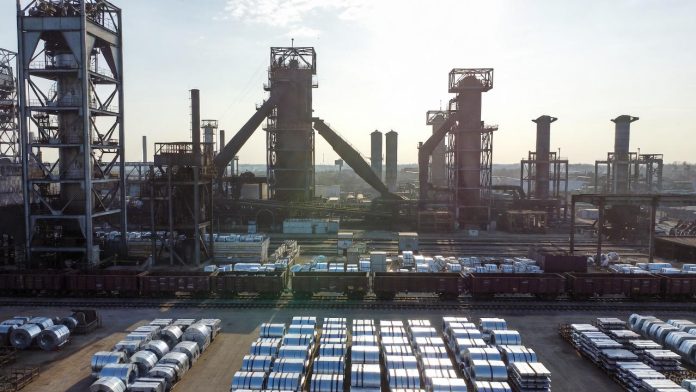The Canadian government is planning new measures to protect its steel industry, which has been under severe pressure due to high tariffs imposed by the United States. These tariffs have made Canadian steel more expensive in international markets, creating challenges for local producers.
A government official not authorised to speak about details ahead of the public announcement told The Canadian Press that Prime Minister Mark Carney will announce new measures soon. His public itinerary shows that Carney will unveil “new measures to protect and transform Canadian strategic industries” at 3:15 p.m. ET.
The government has said it will focus on protecting “strategic industries” that are vital to the country’s economy. Steel, along with lumber and auto parts, is considered one of these key sectors.
Import Restrictions to Boost Domestic Production
One of the main measures will be reducing the amount of steel Canada imports from countries without free trade agreements. Currently, imports from these countries are capped at 50% of the levels seen in 2024. The new plan will cut this further to 20% of 2024 levels.
This change is designed to give Canadian steel producers more room to sell their products domestically. By reducing foreign steel in the market, local companies are expected to see an increase in demand. The government estimates this could create about $854 million in new opportunities for domestic producers.
Steel imports from countries that have free trade agreements are also expected to be reduced, but the details on these changes are not yet clear. In July, Carney reduced the quota for imports from countries without free trade agreements to 50% of 2024 levels and levied a 50% tariff on any imports above the quota.
Imports from countries with a free trade agreement are also expected to be cut, although it is unclear by exactly how much. In July, the government applied a 50% tariff on those countries—except the U.S.—for any steel brought in above what was imported in 2024.
350% tariff warning became Trump’s claimed tool in India–Pakistan tensions
Lower Shipping Costs to Support Producers
Shipping costs have also been a concern for the industry. Moving heavy materials across Canada can be expensive, which adds to the financial strain on producers.
The government plans to work with CN Rail to cut interprovincial freight rates for steel by 50%. If CN cannot provide such a discount, Ottawa will subsidize the difference, the official said.
This plan is expected to make transporting cheaper and faster, benefiting both manufacturers and customers who rely on Canadian steel for construction and manufacturing projects.
It is unclear if the same measures and subsidy will be applied to steel bound for the North, where construction materials are shipped on sealift boats to Nunavut communities during open-water season and trucked into the Northwest Territories and Yukon.
Response to U.S. Tariffs
These measures come after the industry has been hammered by the United States. In June, U.S. President Donald Trump levied 50% tariffs on Canadian steel, affecting exports and raising costs for producers.
Trump also cut off trade talks with Canada last month after the Ontario government ran television ads in U.S. markets highlighting the downside of tariffs, using remarks from former U.S. President Ronald Reagan.
Carney has promised supports “this week” for the steel, auto, and lumber sectors. Officials also confirmed that Carney is expected to announce support for the softwood lumber industry alongside.
By taking these steps, the government aims to protect Canadian steel producers, maintain jobs, and secure a steady supply of steel for domestic industries.


